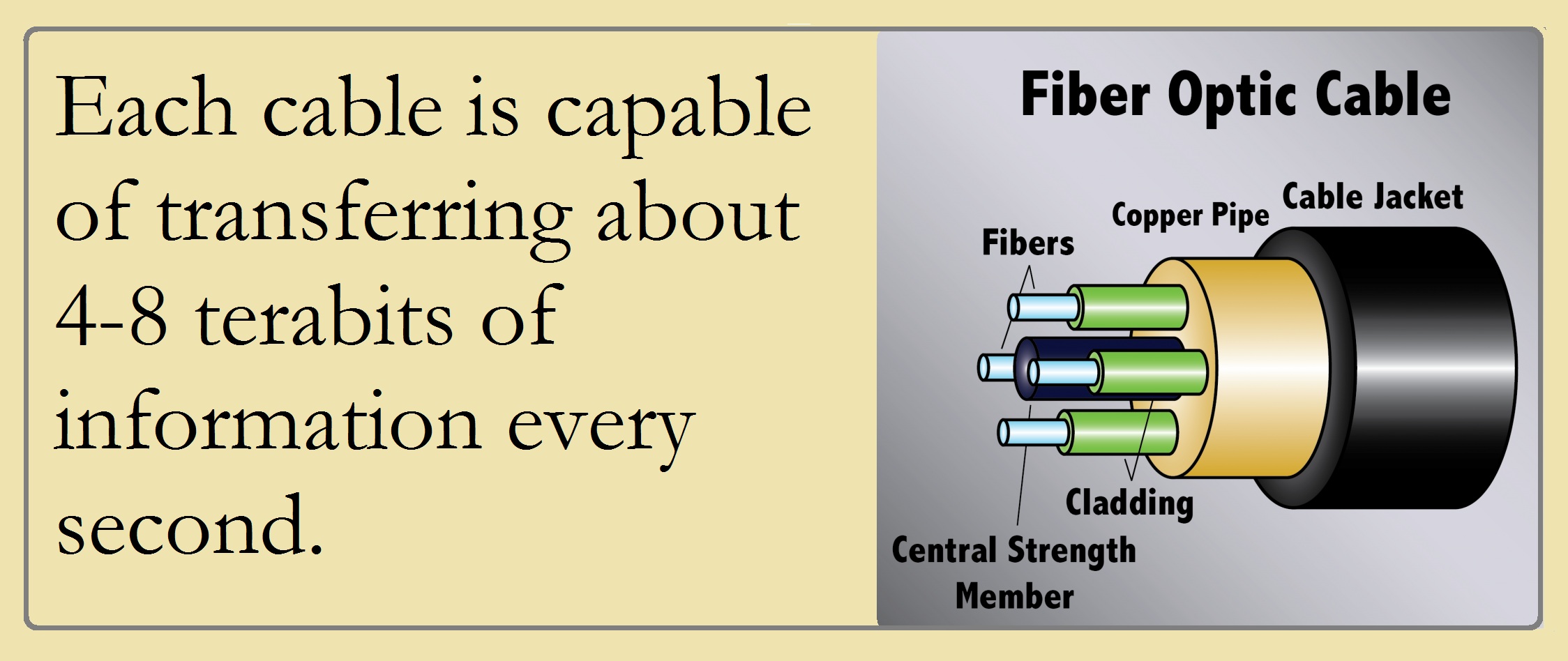In an age where connectivity is an ever-growing necessity, the enigma surrounding fiber optic cables often raises a playful question: How much information can these slender strands of glass actually carry? This query prompts us to explore the remarkable capabilities and underlying technologies that empower fiber optic cables to transmit vast amounts of data at astonishing speeds. The answer lies not only in the physical characteristics of the fibers but also in various modulation techniques and system architectures that optimize bandwidth utilization.
To comprehend the information-carrying capacity of fiber optic cables, one must first grasp the fundamental principles of light transmission. Fiber optics operate on the principle of total internal reflection, wherein light signals are confined within the core of the fiber, allowing for minimal losses over long distances. This construction enables the transmission of data through pulses of light, representing binary information. A key advantage of fiber optics is their relatively high bandwidth capability, often exceeding that of traditional copper cables by several orders of magnitude.
Quantifying the exact amount of information a fiber optic cable can convey involves delving into various metrics, including bandwidth, signal-to-noise ratio, and modulation techniques. Bandwidth, expressed in hertz (Hz), denotes the maximum frequency range the cable can support. In optical fibers, bandwidth is often represented in terahertz (THz), which signifies an ability to carry information at frequencies far beyond those accessible to copper wires. The theoretical limits of bandwidth in modern single-mode fibers can reach upwards of 100 THz, equating to hundreds of terabits per second (Tbps) under optimal conditions.
Furthermore, the signal-to-noise ratio (SNR) plays a critical role in determining how much information can be effectively transmitted. As the lengths of fiber optic cables increase, maintaining a high SNR becomes challenging due to scattering, attenuation, and other forms of noise. Advanced error correction methods and signal regeneration techniques have been developed to mitigate the effects of noise, ensuring that data integrity remains intact over extensive distances. This is where engineering ingenuity thrives—optimizing the balance between maximizing data throughput and minimizing signal degradation.
Modulation techniques also bear significant influence on the data-carrying capacity of fiber optic cables. Traditional on-off keying (OOK) is a straightforward approach where light is either turned on or off to represent binary data. However, more sophisticated techniques, such as quadrature amplitude modulation (QAM) and frequency-division multiplexing (FDM), enable the transmission of multiple signals over a single fiber. This multipath approach exponentially increases the information density, allowing each fiber to support an astounding number of channels simultaneously without sacrificing performance.
Moreover, the advent of wavelength division multiplexing (WDM) technology has further revolutionized fiber optic communication. WDM allows multiple wavelengths (or channels) of light to be transmitted through a single fiber simultaneously. This parallel transmission can dramatically enhance overall throughput—essentially allowing several gigabits to be transmitted at once. The combination of time-division multiplexing (TDM) with WDM can push the envelope even further, achieving greater than petabit-per-second capacities in future optical networks.
To illustrate the sheer magnitude of information that can be transmitted via fiber optics, consider recent developments in submarine cable technology. These undersea cables, which traverse vast oceanic expanses, are capable of handling data loads equivalent to the total bandwidth capacity of hundreds of thousands of individual home internet connections. Some of the latest deployments boast a capacity of 200 Tbps or more. Such capabilities facilitate the seamless streaming of high-definition content, cloud computing, and global communications—a feat that would have been unthinkable without fiber optic technology.
However, we must also confront the challenges that accompany an insatiable demand for bandwidth. The escalating requirements of data transmission for applications such as 5G, Internet of Things (IoT), and high-definition streaming not only strain existing infrastructure but also call for more innovative solutions. Continuous advancements in optical fiber materials, such as photonic crystal fibers and multimode fibers designed for higher capacity, are crucial in meeting growing demands while keeping data transmission costs manageable.
The future trajectory for fiber optic technology appears promising. Researchers are exploring next-generation modulation formats and advanced multiplexing schemes that could potentially transcend current limitations. Innovations in artificial intelligence and machine learning techniques could further optimize network configurations, potentially leading to smarter data routing and reduced latency.
In conclusion, the information-carrying capacity of fiber optic cables is not a mere footnote in the annals of telecommunications. As we peel back the layers of complexity surrounding fiber optics, we uncover their extraordinary potential to transform our interconnected world. The playful question posed at the outset reveals itself to contain a profound truth: fiber optic cables are not just conduits of data, but lifelines that support the fabric of modern communication. Their growth and evolution will undoubtedly echo the demands of our digital future, urging us to rethink, reinvent, and embrace the boundless possibilities that lie ahead.










